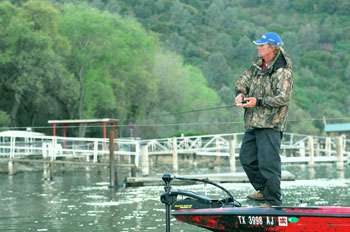
Every decade seems to have its hot lure trend. In the 1950s, it was plastic worms. The '60s brought us the Rapala floating minnow. The '70s, '80s and '90s were all about alphabet crankbaits (the Big O), soft plastic jerkbaits (the Zoom Fluke) and stickworms (the Senko), respectively.
Without any doubt, the first decade of the new millennium is the time of the swimbait. They've been around for a while. In fact, you could argue that the old Mister Twister Sassy Shad, which debuted in the 1970s, was the very first true swimbait. And if you take a look at the Sassy Shad and compare it to many of the soft plastic swimbaits on the market today, you'll see that very little has changed except the variety of sizes that are available now.
That it took 30 years for swimbaits to really catch on shouldn't be so surprising. It's usually the tweaks and refinements that jump start a tackle revolution rather than the full-blown invention of a new genre. For swimbaits, that tweaking was all about size. At two to three inches, the Sassy Shad got more attention from panfish anglers than bass fishermen. It wasn't until manufacturers decided that bigger was better that the swimbait era began. The fact that big swimbaits were catching gigantic bass didn't hurt, either.
But with greater size comes greater challenges for bass anglers — especially for anglers who aren't accustomed to fishing with a bait so big it looks like it should have a license plate. And with so many anglers being frustrated by missed fish and tackle issues, it may be time for a lesson in rigging swimbaits and how to turn strikes into catches.
Kelly Jordon has had lots of success with swimbaits. He's a two-time member of BASS' Century Club, having weighed in more than 100 pounds of bass in a pair of Elite Series events. His insights into getting the most out of your swimbait rigging have stood the test on the water and in competition.
"A lot of guys focus very heavily on their hook when fishing a big soft plastic swimbait — and they should — but the hookset they give is just as important," Jordon says. "You have to start with the right equipment, and that means strong line and a long, stiff rod.
"I use braided line or fluorocarbon with all of my swimbait fishing because it has less stretch than monofilament. When you're trying to punch a big hook through lots of plastic and into a bass' jaw, that's important. I like Berkley 100 Percent Fluorocarbon and Spiderwire."
When it comes to hooks, Jordon has tried them all and had success with many of them.
"At Clear Lake in California, where I had more than 100 pounds, I used a 6/0 Gamakatsu EWG superline hook, and it worked great. I've also used Owner Wide Gap Plus hooks in 6/0 and 7/0 and caught fish with them. Also, Lake Fork Tackle is coming out with a line of swimbait hooks in 5/0 to 11/0 sizes that should be great."
With a good hook in place, Jordon is ready to talk about the key to his swimbait hook-up success — the hookset. While a lot of anglers are now waiting for the bass to take the bait and "load" the rod before sweeping the hook home, Jordon is definitely in the old school camp and prefers to set the hook on his swimbait fish like he's fishing a plastic worm or jig.
"Just as soon as I feel the strike I drill 'em as hard as I can," he says. "I want to set the hook as soon as possible because I've found that a lot of big bass won't hold onto a swimbait very long — definitely not long enough to load the rod up and give you time to sweep the hook into them."
Jordon says he has little trouble hooking up with most of his strikes when he uses his fast, hard set, but there are times when he changes methods.
"If I start missing fish — several in a row — I'll sometimes let them hold the bait a little longer before I set," he says, "but a good bass will usually inhale the entire bait or at least hit the head. When you start losing the tails off your swimbaits, those are usually small fish."




